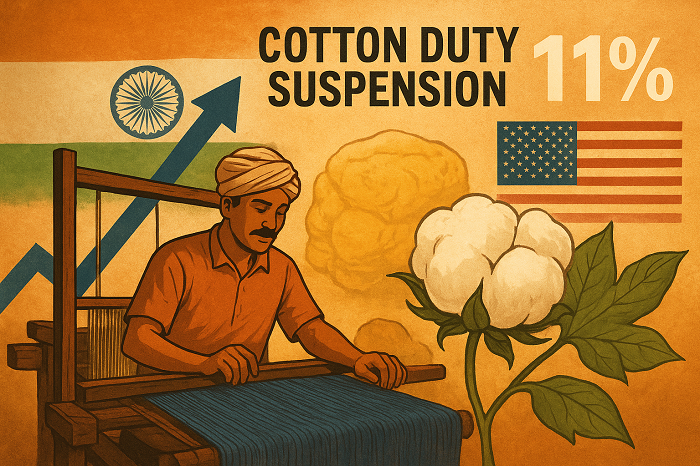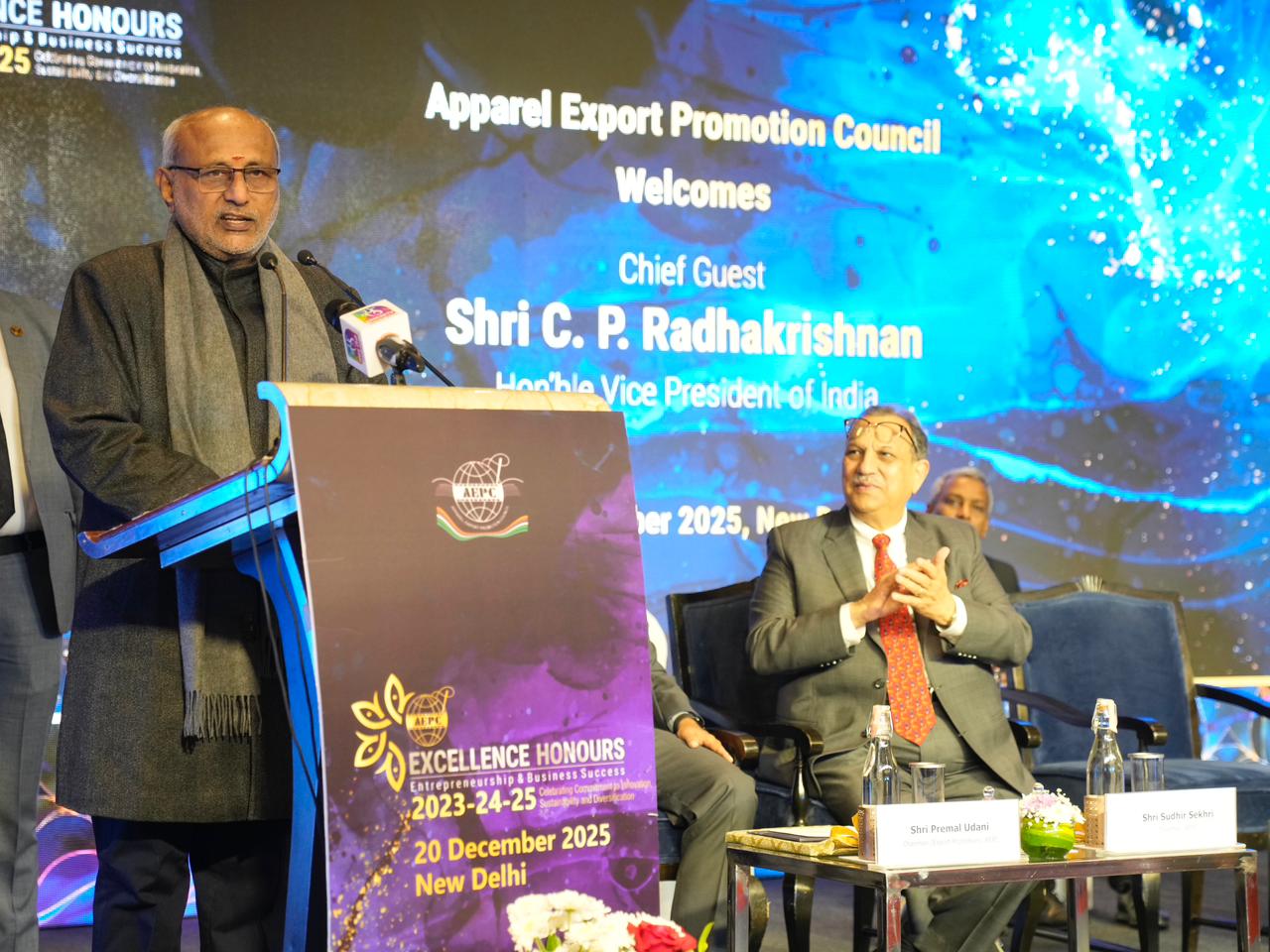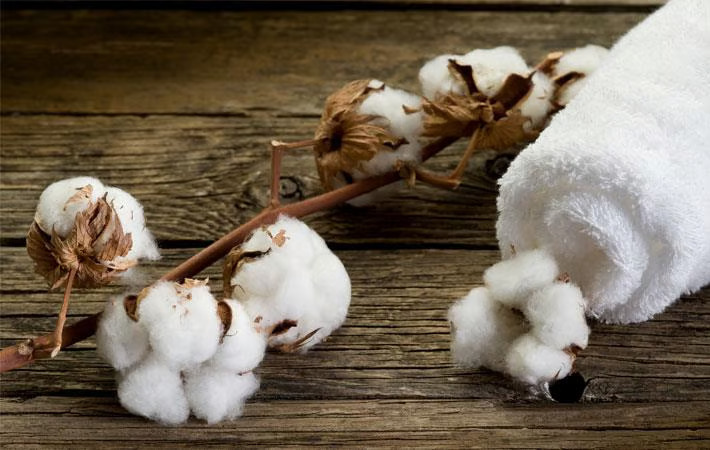
In a move that has sent a wave of optimism through its embattled textile sector, the Indian government has temporarily suspended the 11% import duty on cotton, effective from August 19 to September 30, 2025. This decision, a direct response to a long-standing demand from industry bodies, is seen as a strategic maneuver to stabilize the domestic market, bolster competitiveness, and even thaw strained diplomatic relations with the United States.
The temporary waiver, announced by the Central Board of Indirect Taxes and Customs (CBIC), is a crucial relief for an industry that has been struggling with high raw material costs and a challenging global trade environment. For India's textile and garment sector, which provides direct employment to an estimated 35 million people and contributes nearly 80% of the country’s total textile exports, the 11% import duty has been a significant drag on margins and a major hurdle to competing with rivals like Bangladesh and Vietnam.
The US Factor: A diplomatic overture to mitigate tariff shock
The timing of this cotton duty suspension is no coincidence. It is a calculated move by New Delhi to address escalating trade tensions with Washington. The United States has recently imposed steep tariffs on a wide range of Indian goods, including textiles, in response to India's continued purchases of Russian oil. The initial 25% "reciprocal" tariff was followed by an additional 25% levy, set to take effect on August 27, bringing the total tariff on many Indian exports to a staggering 50%.
This punitive tariff regime has put Indian exporters, especially those in the labor-intensive textile sector, at a severe disadvantage. Compared to competitors like Bangladesh and Vietnam, which face U.S. tariffs of around 20%, India's exports are now among the most expensive. This has led to a sharp decline in new orders, as American buyers are either halting shipments or seeking alternative suppliers to avoid the prohibitive costs. A study from the Indian Council for Research on International Economic Relations (ICRIER) notes that the tariffs are concentrated in sectors like textiles and apparel, which are critical for employment and livelihoods.
By suspending the cotton import duty, India is not only providing a cost-cutting tool for its domestic industry but also sending a powerful signal to the U.S. The move directly benefits U.S. cotton growers, who are India's second-largest supplier. It demonstrates a willingness to address a key U.S. agricultural trade concern, potentially paving the way for a de-escalation of the tariff standoff and reviving stalled bilateral trade agreement talks. The cancellation of a scheduled visit by U.S. trade negotiators had put a question mark on the future of these discussions, making a proactive gesture from India all the more important.
Rakesh Mehra, Chairman of the Confederation of Indian Textile Industry (CITI), praised the government's move as "a right step in the right direction." He acknowledged the delicate balance the government has to strike between protecting farmers' interests and ensuring the competitiveness of the textile industry. Mehra also noted the importance of this action in the context of global events, including the unpredictability from tariffs and ongoing geopolitical negotiations.
Industry leaders, including Dr. S.K. Sundararaman, Chairman of the South India Mills Association (SIMA), have repeatedly highlighted this disparity. He appreciated the move saying that it will "create a win-win strategy both for the cotton farmers and the industry to have a level playing field and gain global competitiveness." While the duty waiver provides a much-needed cost-cutting tool for mills, some farm groups and traders are wary, fearing that a surge in cheap imports could depress domestic cotton prices just as the new harvest season begins.
Price Parity: The crucial factor
The 11% import duty on cotton had created a significant price gap between domestic and international varieties. With the duty in place, the landed price of imported cotton often became uncompetitive, forcing Indian mills to rely on domestic supplies even when they were of a lower quality or insufficient quantity. The removal of this duty now allows for a crucial price correction.
For context, as of early August 2025, the average price of Shankar-6, a key Indian cotton variety, was approximately Rs 56,000 per candy (356 kg). With the 11% duty, the landed price of comparable imported cotton from the U.S. and Brazil was often higher. With the duty suspended, the landed price of high-quality imported cotton from the U.S., Brazil, or Australia will become more aligned with or even lower than domestic prices, offering mills a much-needed alternative. This is especially true for ELS cotton, which India has a domestic shortage of.
Table 1: Comparative cotton prices (August 2025, approximate)
|
Cotton Type |
Country of Origin |
Price (per candy, 356 kg) |
|
Indian Cotton (Shankar-6) |
India |
₹56,000 |
|
Imported Cotton (with 11% duty) |
U.S.A. / Brazil |
> ₹56,000 |
|
Imported Cotton (duty-free) |
U.S.A. / Brazil |
~₹50,000 - ₹55,000 |
Note: Prices are approximate and subject to market fluctuations.
The road ahead
While the duty suspension is a welcome relief, it is a short-term fix to a long-term problem. For the textile industry to achieve the government's ambitious target of $100 billion in exports by 2030, a more permanent solution is required. This includes addressing structural issues like domestic cotton productivity, which is currently at a 15-year low, and securing a long-term, duty-free cotton import policy, especially during the off-season.
The government's "Cotton Mission," with a budget of Rs 5,900 crore, is a step in the right direction, but its full impact will take years to materialize. Until then, the industry will continue to rely on a mix of domestic and imported cotton to meet its needs. The current duty suspension, while temporary, could be the catalyst that helps the Indian textile industry regain its footing and weave its way back to global leadership.












